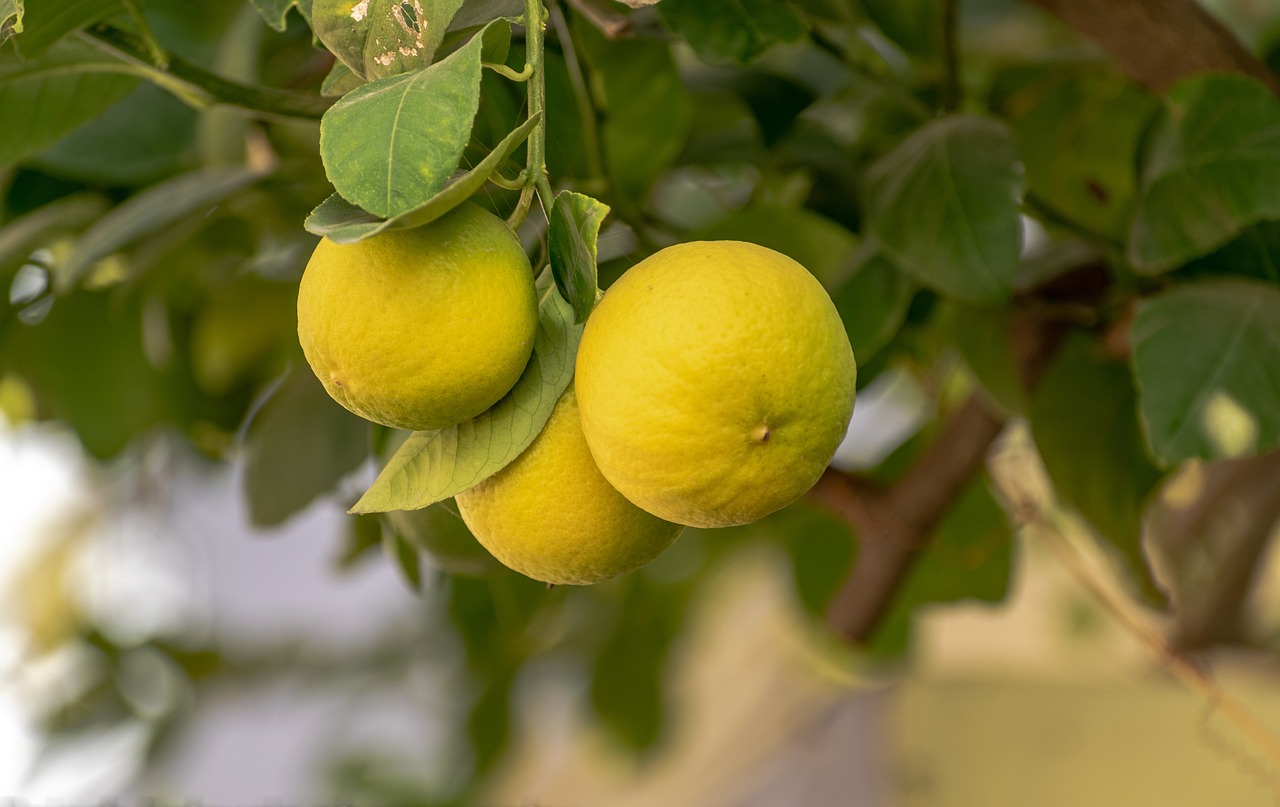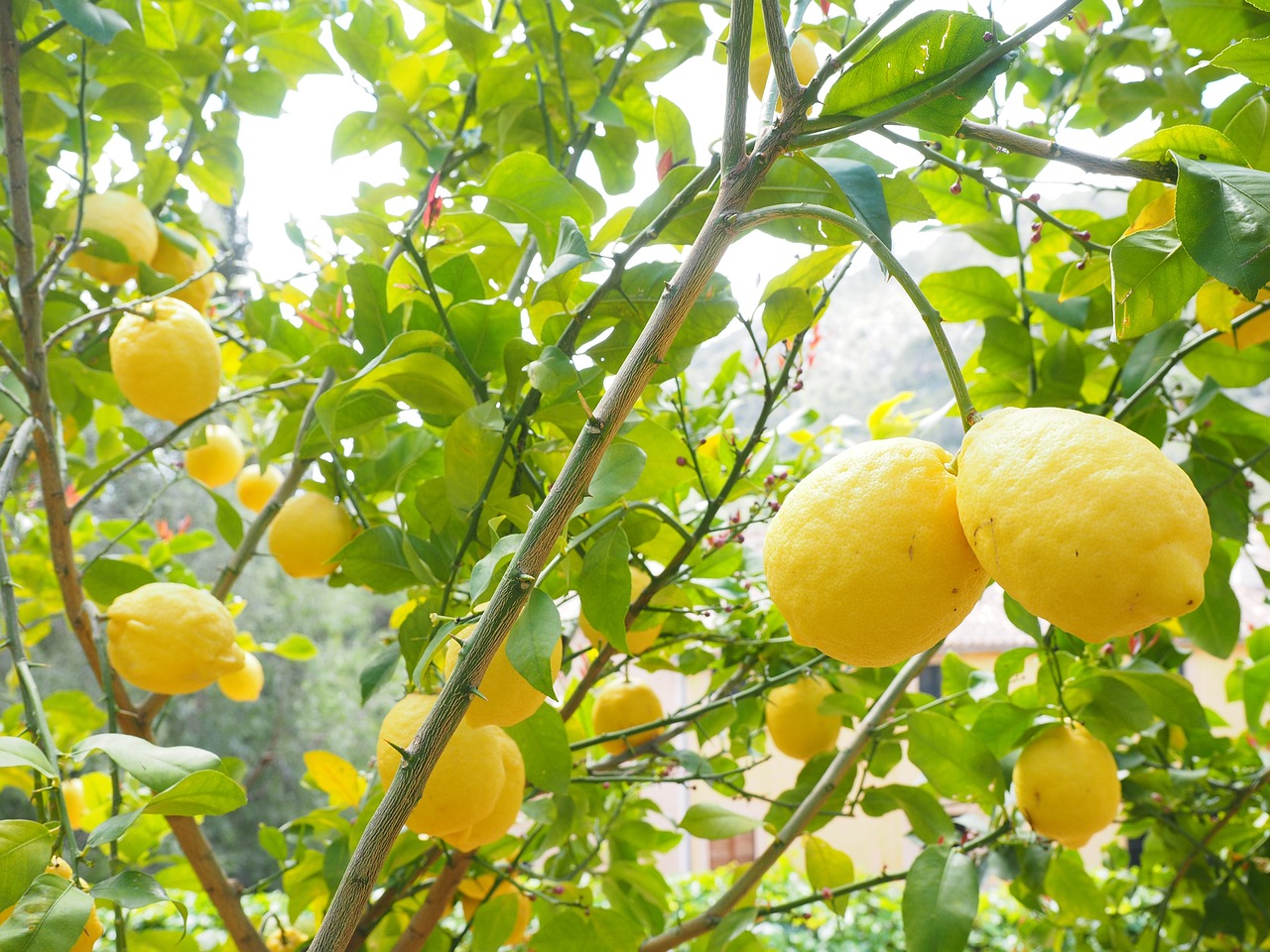Lemon trees typically take about three to five years from seed planting to start bearing fruit. However, the growth rate can vary based on factors such as climate, soil conditions, and care provided during the growth period.
Lemon Tree Growth Overview
Lemon trees are a popular choice for both home gardeners and commercial growers. Known for their vibrant fruit and fragrant blossoms, these trees not only enhance gardens but also provide fresh lemons for culinary uses. Understanding the growth rate of lemon trees from seed to fruiting is crucial for anyone looking to cultivate them successfully.

The growth rate of a lemon tree can depend on several factors. These include the variety of lemon tree, environmental conditions, and care practices. Generally, lemon trees can be grown from seeds or propagated through grafting, with each method influencing the time it takes for the tree to bear fruit.
Factors Affecting Growth Rate
Multiple factors can influence the growth rate of a lemon tree. Here are some of the most significant:
- Climate: Lemon trees thrive in warm climates. They prefer temperatures between 70°F and 85°F. Extreme temperatures can hinder growth.
- Soil Quality: Well-draining soil rich in organic matter is essential. Poor soil can stunt growth and reduce fruit yield.
- Watering: Consistent watering is vital. Over or under-watering can adversely affect growth rates.
- Sunlight: Lemon trees require full sun, ideally six to eight hours a day. Insufficient sunlight can slow growth.
- Fertilization: Regular feeding with a balanced fertilizer supports healthy growth and fruit production.
Growth Timeline from Seed to Fruiting
The journey from seed to fruiting is a gradual process. Here is a general timeline that outlines the growth stages of a lemon tree:

| Stage | Time Frame | Description |
|---|---|---|
| Seed Germination | 2-3 weeks | Seeds typically sprout within two to three weeks under optimal conditions. |
| Seedling Stage | 6-12 months | Young plants develop roots and leaves, establishing themselves in their environment. |
| Vegetative Growth | 1-3 years | The tree grows taller and develops more branches and leaves. |
| Flowering | 3-5 years | Flowers begin to appear, signaling that the tree is nearing fruiting age. |
| Fruit Development | 4-6 months after flowering | Once pollinated, flowers develop into fruit, which takes several months to mature. |
This timeline provides a general framework, but individual results can vary. Some factors, such as the specific variety of lemon tree, can speed up or slow down this timeline. For example, certain dwarf varieties may produce fruit sooner than standard types.
In addition to understanding the timeline, it’s essential to provide proper care throughout these stages. Regular monitoring of environmental conditions and adjustments in care practices can significantly impact the growth rate and overall health of the lemon tree.
Lemon trees are resilient and can adapt to various growing conditions. However, providing them with optimal care will help ensure they reach their full potential. With patience and attention to detail, gardeners can enjoy the fruits of their labor within just a few years.

Optimal Conditions for Lemon Tree Growth
To achieve a healthy lemon tree with a good fruit yield, understanding optimal growing conditions is essential. Lemon trees thrive in specific environments that cater to their needs. Here are the key conditions to consider:
Sunlight Requirements
Lemon trees require a significant amount of sunlight. Ideally, they should receive:
- Full Sun: At least 6 to 8 hours of direct sunlight each day.
- Location: A south-facing spot in the garden is preferred for maximum sunlight exposure.
Insufficient sunlight can lead to weak growth and poor fruit production. If you are growing lemon trees indoors, consider placing them near a sunny window or using grow lights to supplement natural light.
Soil Composition
The soil used for planting lemon trees plays a critical role in their growth. Lemon trees prefer:

- Well-Draining Soil: This prevents root rot and other diseases.
- Soil pH: A slightly acidic to neutral pH (6.0 to 7.0) is ideal.
Adding organic matter such as compost can improve soil structure and provide essential nutrients. Conducting a soil test can help determine the pH and nutrient levels, allowing for appropriate amendments.
Watering Practices
Proper watering is vital for the health of lemon trees. Here are some guidelines:
- Regular Schedule: Water deeply but infrequently to encourage deep root growth.
- Soil Moisture: Check the top inch of soil; if it feels dry, it’s time to water.
- Drainage: Ensure pots or garden beds have good drainage to avoid standing water.
Overwatering can lead to root problems, while underwatering can cause stress and affect fruiting. Finding the right balance is crucial for optimal growth.
Pest and Disease Management
Lemon trees are susceptible to various pests and diseases that can impact their growth and fruit production. Identifying and managing these issues early is essential for maintaining healthy trees.
Common Pests
Some of the most common pests that affect lemon trees include:
- Aphids: Small insects that suck sap from leaves, leading to yellowing and stunted growth.
- Spider Mites: Tiny pests that create webbing on the underside of leaves, causing leaf drop.
- Citrus Leafminer: This pest tunnels through leaves, creating visible trails and damaging foliage.
Regularly inspecting your lemon tree for signs of pests can help with early detection. Organic insecticidal soaps and neem oil can be effective treatments.
Disease Prevention
Lemon trees are also prone to diseases such as:
- Citrus Canker: A bacterial disease causing lesions on leaves and fruit, reducing quality.
- Root Rot: Caused by overwatering or poorly draining soil, leading to wilting and death.
- Powdery Mildew: A fungal disease that appears as white powder on leaves, impacting photosynthesis.
Preventive measures include proper watering practices, ensuring good air circulation, and removing affected plant parts promptly. Additionally, maintaining healthy soil through regular fertilization can boost the tree’s resilience against diseases.
Nutritional Needs for Healthy Growth
Nutrients play a crucial role in the development of lemon trees. Regular fertilization helps ensure they receive adequate nutrition throughout their growth stages.
Essential Nutrients
Lemon trees require several key nutrients, including:
- Nitrogen: Promotes leafy growth and overall vigor.
- Phosphorus: Supports root development and flowering.
- Potassium: Enhances fruit quality and disease resistance.
A balanced fertilizer specifically formulated for citrus trees can provide these essential nutrients. Fertilization should occur during the growing season, and adjustments can be made based on soil tests or tree health observations.
By ensuring optimal conditions, managing pests and diseases, and providing adequate nutrition, gardeners can significantly enhance the growth rate and productivity of lemon trees. This foundation will set the stage for successful fruiting in subsequent years.
Propagation Methods for Lemon Trees
When it comes to growing lemon trees, gardeners can choose from several propagation methods. Each method has its advantages and challenges, impacting the growth rate and fruiting timeline. Understanding these methods can help gardeners decide on the best approach for their specific needs.
Growing from Seed
Growing lemon trees from seeds is a common method, especially for home gardeners. This approach involves the following steps:
- Seed Selection: Choose seeds from healthy, ripe lemons. Organic lemons are preferable to avoid chemicals that may hinder germination.
- Preparation: Rinse the seeds to remove any pulp. Soak them in water for 24 hours to enhance germination.
- Planting: Fill seed trays or pots with well-draining potting soil. Plant the seeds about 1 inch deep and water gently.
- Care: Place the pots in a warm, sunny location. Keep the soil moist but not soggy.
Seeds typically germinate within two to three weeks. However, growing from seeds may result in trees that take longer to bear fruit, often ranging from three to five years.
Grafting
Grafting is another popular method for propagating lemon trees, often used by commercial growers. This technique involves joining a piece of a mature tree (the scion) to a rootstock. The benefits include:
- Faster Fruit Production: Grafted trees can produce fruit within 1 to 2 years after planting.
- Improved Disease Resistance: Selecting a robust rootstock can enhance the tree’s resilience.
- Consistent Quality: Grafting maintains the characteristics of the parent tree, ensuring uniform fruit quality.
The grafting process requires some skill, including making clean cuts and ensuring proper alignment of cambium layers for successful healing.
Air Layering
Air layering is another effective propagation technique that encourages roots to form on a branch while still attached to the parent tree. This method can be particularly useful for preserving specific varieties. The steps include:
- Selecting a Branch: Choose a healthy, flexible branch that is at least one year old.
- Preparing the Site: Make a shallow cut around the branch and remove a strip of bark (about 1 inch wide).
- Applying Rooting Hormone: Dust the exposed area with rooting hormone to encourage root development.
- Wrapping: Wrap the area with moist sphagnum moss and cover it with plastic wrap to retain moisture.
- Waiting: After several weeks, roots should begin to form. Once developed, cut the branch below the roots and plant it in soil.
This method allows growers to propagate trees while ensuring they inherit the desirable traits of the parent tree.
Environmental Considerations for Growth
The environment plays a crucial role in the growth and productivity of lemon trees. Understanding how different climatic factors affect development can help gardeners create optimal conditions. Here are key environmental considerations:
Temperature
Lemon trees thrive in warm temperatures but can be sensitive to extreme conditions:
- Ideal Temperature Range: Lemon trees prefer temperatures between 70°F to 85°F.
- Frost Sensitivity: Exposure to frost can damage leaves and fruit. Protect young trees during cold snaps with blankets or frost cloths.
Humidity
Lemon trees generally prefer moderate humidity levels. Here’s how humidity affects growth:
- Low Humidity: Can lead to leaf drop and poor fruit set.
- High Humidity: May promote fungal diseases if airflow is restricted.
If growing indoors, consider using humidifiers or placing trays of water near the plants to maintain adequate humidity levels.
Wind Exposure
Lemon trees can be vulnerable to strong winds, which may cause damage or hinder growth. Here are ways to protect them:
- Windbreaks: Plant shrubs or install fences around lemon trees to provide shelter from harsh winds.
- Potted Trees: For potted lemon trees, consider moving them indoors or to a sheltered location during storms.
Caring for lemon trees involves understanding their propagation methods and environmental needs. By selecting the right approach and maintaining optimal growing conditions, gardeners can enjoy healthy lemon trees that bear fruit in due time.
Harvesting and Maintaining Your Lemon Tree
Once your lemon tree reaches maturity and begins to produce fruit, proper harvesting and ongoing maintenance are essential to ensure continued health and productivity. Here are some important aspects to consider:
Harvesting Lemons
Knowing when and how to harvest lemons can significantly affect their quality and flavor. Here are tips for a successful harvest:
- Timing: Lemons are typically ready for harvest when they turn a bright yellow color. Depending on the variety, this may occur anywhere from 6 to 9 months after flowering.
- Size: Mature lemons should be firm and plump. They will have a slight give when gently squeezed, indicating ripeness.
- Harvesting Technique: Use pruning shears to cut the fruit from the tree, leaving a small stem attached. This helps prevent damage to the tree and promotes new growth.
Regular harvesting encourages the tree to produce more fruit, as it stimulates further flowering and fruit set.
Post-Harvest Care
After harvesting, it is important to care for your lemon tree to maintain its health:
- Pruning: Trim back any dead or diseased branches after the harvest. This helps improve airflow and reduces disease risk.
- Fertilization: Continue fertilizing your lemon tree every 6 to 8 weeks during the growing season to support ongoing health and fruit production.
- Watering: Adjust your watering schedule based on seasonal changes. Ensure consistent moisture without overwatering.
Common Challenges in Lemon Tree Cultivation
Cultivating lemon trees can come with its own set of challenges. Being aware of potential issues can help you manage them effectively:
Pest Management
Pests can pose a significant threat to the health of your lemon tree. In addition to those previously mentioned, consider these common pests:
- Whiteflies: These tiny insects can weaken plants by sucking sap and may also spread viruses.
- Citrus Thrips: They can damage leaves and fruit, leading to deformed or scarred lemons.
Regular inspections and maintaining a clean garden environment can help prevent infestations. Introducing beneficial insects, such as ladybugs, can also assist in keeping pest populations in check.
Disease Management
In addition to pests, lemon trees can be susceptible to diseases. Common issues include:
- Greening Disease: A serious condition spread by insects that leads to yellowing leaves and poor fruit development.
- Fungal Infections: Such as leaf spot or mold, which can occur due to overly wet conditions or poor air circulation.
Implementing good cultural practices, such as proper spacing between trees, regular pruning, and maintaining good airflow, can mitigate disease risks.
Final Thoughts
The journey of growing a lemon tree from seed to fruiting is both rewarding and educational. By understanding the growth rate, environmental needs, propagation techniques, and maintenance practices, gardeners can enjoy the process of cultivating these beautiful and fruitful trees.
As you embark on this journey, remember that patience is key. Each lemon tree is unique, with its own pace of growth influenced by various factors including climate, care, and variety. With dedication and attention, your lemon tree can thrive and provide you with fresh, delicious lemons for many years to come.
The experience of nurturing a lemon tree not only yields fruit but also creates a connection with nature. Whether you grow them in a garden or as potted plants indoors, lemon trees can enhance your environment with their beauty and fragrance. Embrace the learning process, adapt to challenges, and enjoy the satisfaction that comes from growing your own food.
